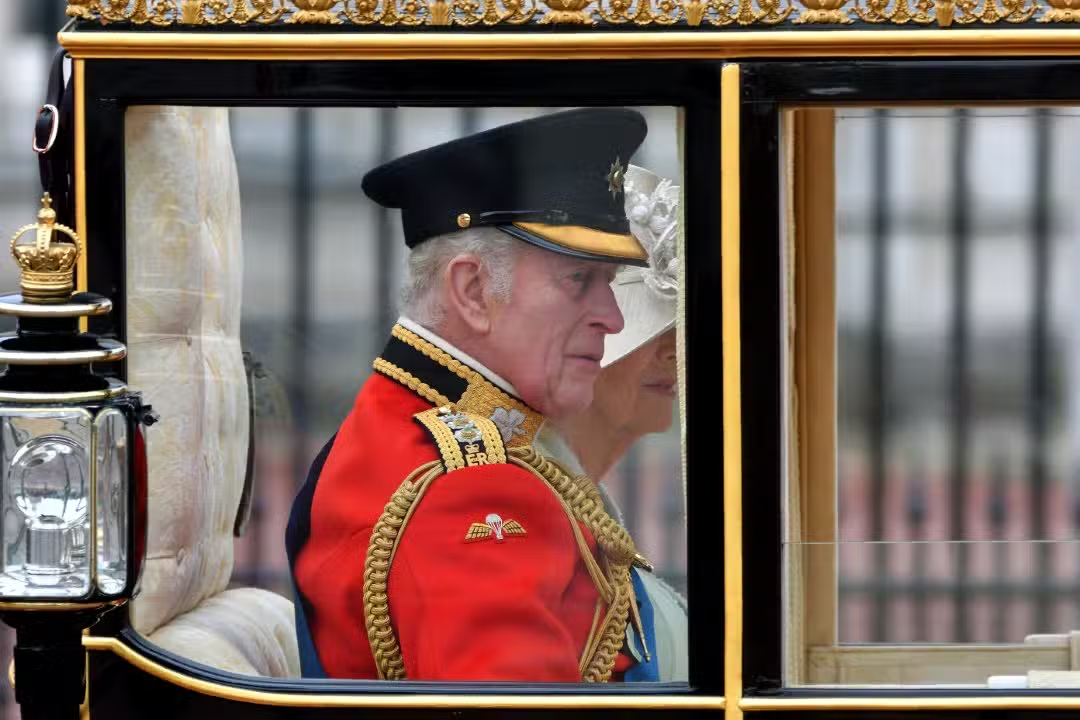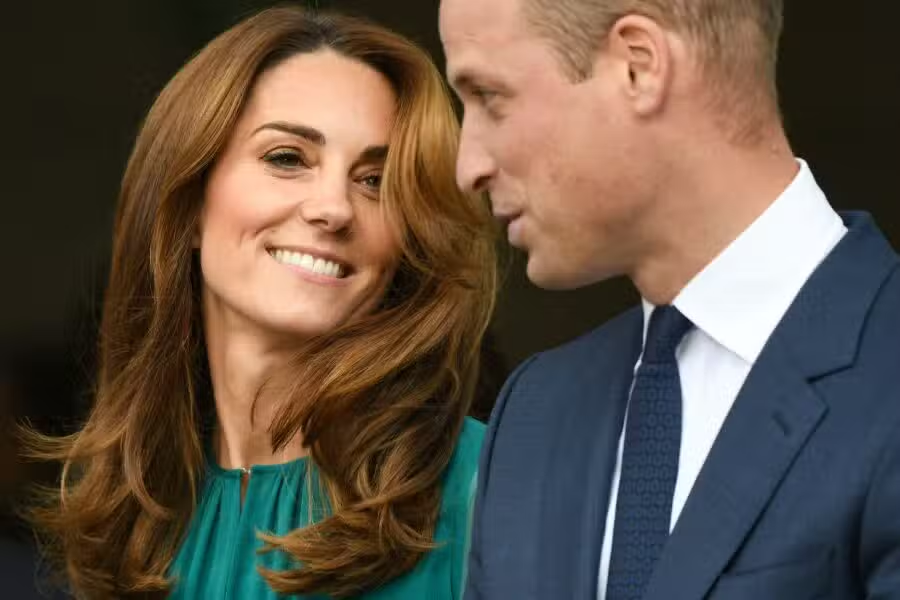Share
Tweet
Share
Share
The British monarchy is navigating a pivotal moment, with Prince William, aged 42, taking on an increasingly prominent role as King Charles III, 76, undergoes treatment for cancer diagnosed in 2024. Since Charles ascended the throne in 2022 following Queen Elizabeth II’s death, his health has curtailed his public engagements, shifting significant responsibilities to his heir. William, Prince of Wales, has represented the Crown at major global events, including the reopening of Notre-Dame Cathedral in Paris in April 2025, while championing initiatives like the Earthshot Prize, a global environmental award distributing £5 million annually to climate solutions. Supported by Kate Middleton, who overcame cancer in 2024, William is steering the monarchy toward modernization, prioritizing issues like sustainability, mental health, and accessibility, as Charles’s health accelerates preparations for a potential early succession.
The cancer diagnosis of Charles III, revealed after a prostate surgery in January 2024, sent shockwaves through the royal family. The ongoing treatment, extending into 2025, has drastically reduced the king’s public appearances, with a hospitalization in March 2025 due to treatment side effects. This situation has thrust William into the forefront, assuming diplomatic roles and leading social initiatives. Kate Middleton, 43, resumed public duties in 2025 after announcing her cancer remission in January, strengthening her partnership with William. Together, they balance royal obligations with raising their three children—George, Charlotte, and Louis—striving to maintain family stability amid public scrutiny.
William also oversees the Duchy of Cornwall, a vast estate generating approximately £20 million annually, which funds projects like affordable housing in Nansledan and the St. Mary’s Community Hospital in the Isles of Scilly. These initiatives reflect his vision for a monarchy attuned to societal needs. Meanwhile, Queen Camilla, 77, faces limitations due to a pneumonia diagnosis in 2024, further increasing the monarchy’s reliance on William. The convergence of health crises and calls for reform places the monarchy at a critical juncture, with William leading the charge toward a new era.
Key succession challenges: Health issues of Charles III and Camilla, strained relations with Harry and Meghan, and debates over monarchy reform.William’s priorities: Leadership of the Duchy of Cornwall, advocacy for the Earthshot Prize, and community projects.Kate’s contributions: Renewed focus on mental health and public engagement post-recovery.Health crisis reshapes British monarchy
The health of Charles III has fundamentally altered the monarchy’s trajectory. Diagnosed with cancer in 2024 after a routine prostate procedure, the king required intensive treatment that limited his ability to maintain a full public schedule. As the oldest monarch to ascend the throne, Charles faced immediate challenges in sustaining visibility. A hospitalization in March 2025, prompted by treatment complications, intensified the shift of responsibilities to William, who has taken on roles traditionally reserved for the reigning monarch, from state functions to leadership in social causes.
William’s preparation for the throne is hands-on and immersive. In 2024, he participated in the 80th anniversary commemorations of D-Day alongside world leaders, solidifying his diplomatic stature. He has also shadowed Charles III in high-level meetings, gaining experience in state affairs. His management of the Duchy of Cornwall reflects a commitment to social impact, with projects extending beyond ceremonial duties. In Nansledan, Cornwall, William oversees the development of affordable housing, addressing the UK’s housing crisis.
 Rei Charles – Foto: Pete Hancock / Shutterstock.com
Rei Charles – Foto: Pete Hancock / Shutterstock.com
Queen Camilla, despite her steadfast support for the king, has been constrained by her own health issues. Her 2024 pneumonia diagnosis reduced her public role, underscoring the monarchy’s dependence on William. The confluence of health crises, coupled with public scrutiny following Harry and Meghan’s exit in 2020, presents a complex landscape. William, however, sees these challenges as an opportunity to refresh the monarchy’s image, aligning tradition with demands for greater transparency and accessibility.
William shapes a modern monarchy
William’s leadership blends royal heritage with progressive vision. His stewardship of the Duchy of Cornwall, spanning 52,000 hectares and generating substantial revenue, supports initiatives that enhance community welfare. The St. Mary’s Community Hospital, for instance, has improved healthcare access in a remote region, while housing developments in Nansledan address housing shortages. These efforts underscore William’s commitment to delivering tangible public benefits.
The Earthshot Prize, launched by William in 2020, is a cornerstone of his agenda. In 2025, it allocated £5 million to climate innovations, supporting entrepreneurs and youth in sustainability projects. Building on Charles III’s environmental legacy, the prize has earned global acclaim for its practical, results-driven approach. William leverages digital platforms to amplify its reach, connecting with a younger, climate-conscious audience.
Kate Middleton complements this vision with her advocacy for mental health. Through organizations like Shout, a text-based crisis support service, she promotes emotional well-being. Her return to public life in 2025, following her cancer remission, was marked by events like the “Together at Christmas” concert in December 2024, reinforcing her public connection. Kate’s work, paired with William’s leadership, signals a monarchy that is more approachable and aligned with contemporary concerns.
Earthshot Prize: £5 million for climate solutions in 2025.Duchy projects: St. Mary’s Hospital and Nansledan housing.Mental health: Kate’s initiatives with Shout.Digital outreach: Social media enhances public engagement.Navigating family tensions and public expectations
The monarchy grapples with internal divisions that complicate William’s transition. The departure of Harry and Meghan Markle in 2020 continues to cast a shadow. Now based in California, the couple’s independent ventures, including Netflix projects, often spark controversy in the UK. Relations between William and Harry remain strained, with the Prince of Wales reportedly favoring a limited role for his brother in the monarchy, signaling a lasting rift.
The situation surrounding Prince Andrew adds further complexity. Stripped of military titles in 2022 due to his ties to Jeffrey Epstein, Andrew remains a contentious figure, fueling debates about the monarchy’s structure. William counters public criticism with initiatives that underscore the institution’s relevance, such as the Earthshot Prize and housing projects. His strategy focuses on demonstrating the monarchy’s value through actionable outcomes, addressing calls for greater accountability.
Kate Middleton, who faced her own cancer diagnosis in 2024, temporarily stepped back from public duties, allowing William to prioritize family support. Her return in 2025, highlighted by events like “Together at Christmas,” showcased her resilience and dedication to social causes. The couple’s use of social media and personal messaging breaks from traditional royal communication, aligning with a public seeking authenticity.
Preparing the next generation
William envisions a leaner monarchy, with younger royals playing active roles. Lady Louise Windsor, 21, and James, Viscount Severn, 17, children of Prince Edward, are potential contributors. Louise, who forgoes her princess title, is admired for her low-key approach, while James shows early interest in public duties. William aims to integrate them gradually, infusing the monarchy with youthful energy.
This approach addresses criticism about the monarchy’s cost and size. Drawing inspiration from Scandinavian models, William seeks a structure that prioritizes active, relatable royals. Structural reform is vital amid the UK’s evolving political and social landscape, where the monarchy faces pressure to justify its relevance. Engaging younger royals like Louise and James reflects William’s commitment to revitalizing the institution.
The education of William and Kate’s children also aligns with this forward-looking vision. George, 11, second in line to the throne, is gradually introduced to royal responsibilities, while Charlotte, 9, and Louis, 6, remain largely shielded from public exposure. The family’s move to Adelaide Cottage in Windsor in 2022 provides a private sanctuary, with the children attending Lambrook School in Berkshire. This setup reinforces the balance between royal duties and a normal childhood.
Family life as a pillar of stability
Despite royal demands, William and Kate prioritize privacy and family stability. Adelaide Cottage, located on the Windsor estate, offers a retreat from public scrutiny. The children engage in school activities, including sports and cultural events, while William, an avid Aston Villa supporter, bonds with them over football matches and shared hobbies.
George, who will one day inherit the throne, is carefully prepared for his future role. William and Kate ensure his exposure to royal duties is measured, preserving his childhood. Charlotte and Louis maintain a more sheltered routine, focusing on education and personal growth. This approach underscores the couple’s commitment to fostering a strong foundation for the next generation of royals.
Adelaide Cottage: Private residence in Windsor.Education: Lambrook School provides stability for the children.George’s role: Gradual introduction to royal duties.Family moments: Shared activities like football matches.William’s formation and leadership
William’s background shapes his pragmatic leadership. A geography graduate from the University of St. Andrews, where he met Kate, he also served as a search-and-rescue pilot in the Royal Air Force. These experiences inform his hands-on approach to the Duchy of Cornwall and social initiatives. Unlike Charles III’s more traditional upbringing, William blends accessibility with formal duties, engaging in community events and digital communication.
His relationship with Charles III, strengthened by shared environmental passions, has evolved as William assumes greater autonomy due to the king’s health. He balances ceremonial roles, such as representing the Crown at global events, with practical projects like sustainable community development. This duality reflects his vision for a monarchy that honors its heritage while meeting modern expectations.
Timeline of critical events
William’s path to the throne is marked by defining moments that highlight his rising prominence:
September 2022: Death of Queen Elizabeth II; Charles III ascends.January 2024: Charles III’s cancer diagnosis post-prostate surgery.March 2024: Kate Middleton begins cancer treatment.June 2024: William attends 80th D-Day anniversary events.December 2024: Kate hosts “Together at Christmas” concert.January 2025: Kate announces cancer remission.March 2025: Charles III hospitalized due to treatment side effects.April 2025: William attends Notre-Dame reopening.Vision for the monarchy’s future
With Charles III’s health constraining his reign, William emerges as the monarchy’s anchor. His leadership in global initiatives like the Earthshot Prize and local projects like St. Mary’s Hospital demonstrates his ability to blend tradition with innovation. Kate’s recovery strengthens their partnership, presenting a monarchy that resonates with modern audiences. Despite family rifts and public scrutiny, William remains focused on social impact and preparing his children for the future.
The challenges ahead—public demands for reform, health uncertainties, and internal tensions—test William’s resolve. His approach, combining accessibility with social good, suggests a reign that will revitalize the monarchy. From community-focused projects to global advocacy, William is building a legacy that addresses local needs and amplifies international influence.
The British monarchy, under William’s guidance, faces a transformative era. Health crises, family dynamics, and modernization pressures create a complex landscape, but William’s forward-thinking vision signals readiness. With Kate and the emerging royals by his side, he is shaping an institution poised to navigate the demands of a rapidly changing world.

